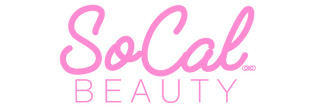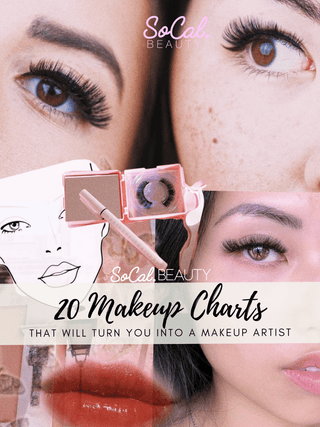20 Makeup Charts That Will Turn You Into A Makeup Artist
When you have limited experience with creating different makeup looks, it can be difficult to know where to start, especially when applying makeup to other people’s faces that are unfamiliar to you. It can really help to have at least practiced beforehand, and that’s where makeup charts can help.
What are makeup charts?
Makeup charts, also known as face charts, are a little bit like a mock-up of a makeup look; they're a draft or a plan that is done of the look before you start applying the makeup for real. They consist of an outline of a face that shows the features that is printed on a type of paper that accepts the makeup pigments in a way that lets you apply real makeup to test out the look.
This gives you the opportunity to practice looks and techniques that you might not have done before and has the added benefit of acting as an archive that you can refer back to down the road. When it comes to drawing on lashes, try this Liquid Designer Eyeliner in Black to help create fine brush strokes.

Makeup charts must take into account the differences in features of different clients if they are to be used as effective planning and practicing tools.
There are even predesigned charts to show you how to do certain looks. So, what are some makeup charts that will help you become a makeup artist?
Makeup charts for open and closed eyes

When recreating or designing a makeup look, you're going to want to be able to see and create the eye makeup on both open and closed eyes. Makeup charts are available in various configurations so you can choose how the look will be portrayed.
- You can get makeup charts that show both eyes open so you can see or recreate the eye makeup as a wide-eyed look, with details of which products were used.
- Similarly, there are makeup charts showing both of the eyes closed so you can see or practice the full eyelid.
- Additionally, there are those with one eye open and one closed if you’d prefer to just have one makeup face chart for the whole look.
Makeup charts that have predesigned looks for you to recreate
Sometimes you may need some guidance to create a particular makeup look. You can still practice it first by recreating it on a blank makeup chart, but knowing what to do in the first place isn’t always easy. Many professional makeup artists make their completed makeup charts available online.
- There are many makeup charts that show specific eye makeup techniques. Maybe it’s a particular liner look or a more complex arrangement of eyeshadow colors.
- Some makeup artists produce makeup charts to illustrate particular lip makeup techniques that you might want to imitate.
- There are also charts showing contouring techniques for different looks. They can be really helpful as not only do they show the placement of the products but also state what products to use.
- Charts showing looks that suit dark skin tones are great for inspiration on the colors that would look fabulous.
- Charts with looks better suited to medium skin tones
- Charts that display looks that are for lighter skin tones
- Charts that illustrate mature makeup looks are a great idea for older clients, ensuring the most flattering results.
- Charts showing bridal makeup looks can be really useful. Not only can this be great for recreating the look but also for allowing a client to browse the looks and select something that appeals to them and their bridal party.
Charts that take facial shape into account

Some face shapes are less suited to certain looks or will require different application techniques to look good. Being able to practice is a huge help, and you can only really do this if you know what products you need to use and where. In total, there are nine face shapes. These are:
- Heart-shaped
- Round
- Oblong
- Rectangle
- Triangle
- Inverted triangle
- Square
- Oval
- Diamond
You can get makeup charts that illustrate makeup looks and techniques that are specifically suited to each of these nine face shapes. They will focus largely on contouring, which can be used to balance the weight of different parts of the face and accentuate bone structure. For example, round face shapes benefit from contouring to help give the impression of more chiseled cheekbones and a more angular jawline.

